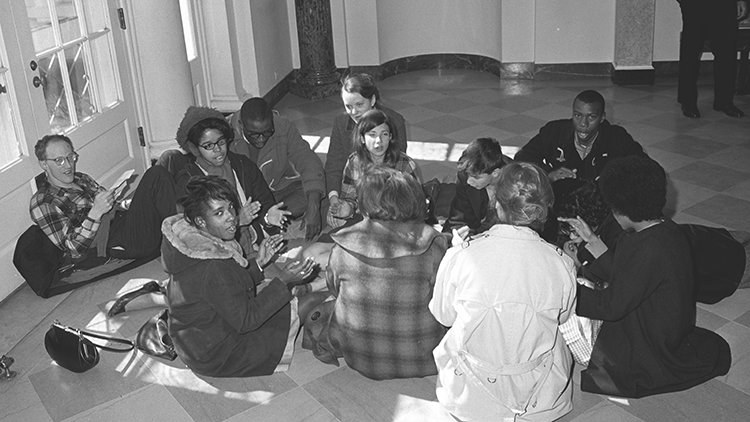
In 1955, Rosa Parks lived in Montgomery, Alabama. The laws there segregated, or separated, White and African Americans. White and African American students, for example, went to different schools. African Americans could not eat at the same restaurants as White people. The laws segregated people on public transportation, too. African Americns had to sit in their own sections at the backs of busses.
On December 1, Parks was in the first row of the African American section of a bus. The driver asked her to give up her seat for a White man. Parks refused. The bus driver called the police, and the police arrested her.
African American activists heard about her arrest and called for a boycott of the busses. That means that African Americans would not ride them. The first day of the bus boycott, a group of protestors gathered to talk about their plans. Martin Luther King, Jr. spoke at the meeting. He said, “The great glory of American democracy is the right to protest for right.”
The boycott lasted for more than a year. The city lost a lot of money as former bus riders walked or carpooled instead. Finally, the United States Supreme Court said that the bus segregation rules violated the Constitution. The bus boycott was peaceful, and it was effective. The bus system in Montgomery was finally integrated.
What Do You Think? Why was the bus boycott successful? What kinds of protests do you think are the most effective?
Photo Credit: LBJ Library photo by Yoichi Okamoto/White House Photo Office



